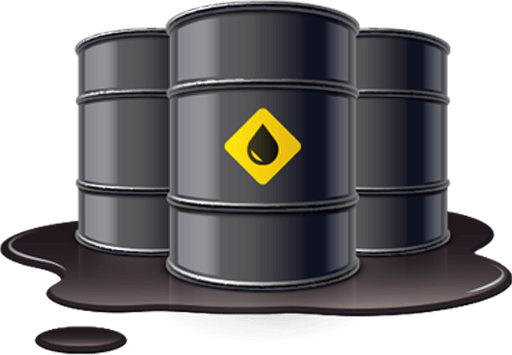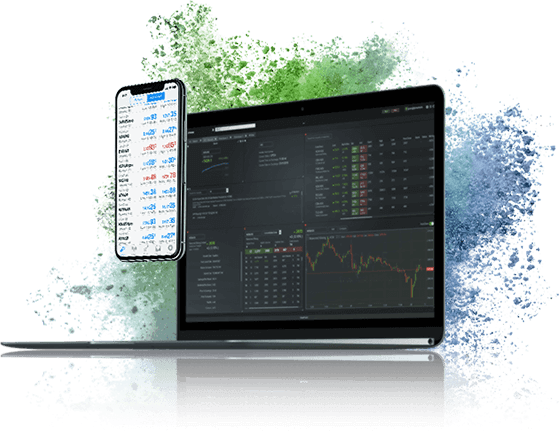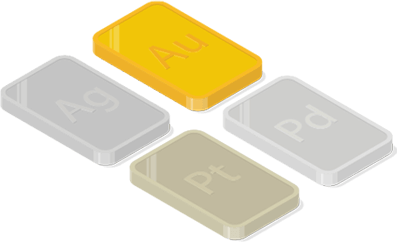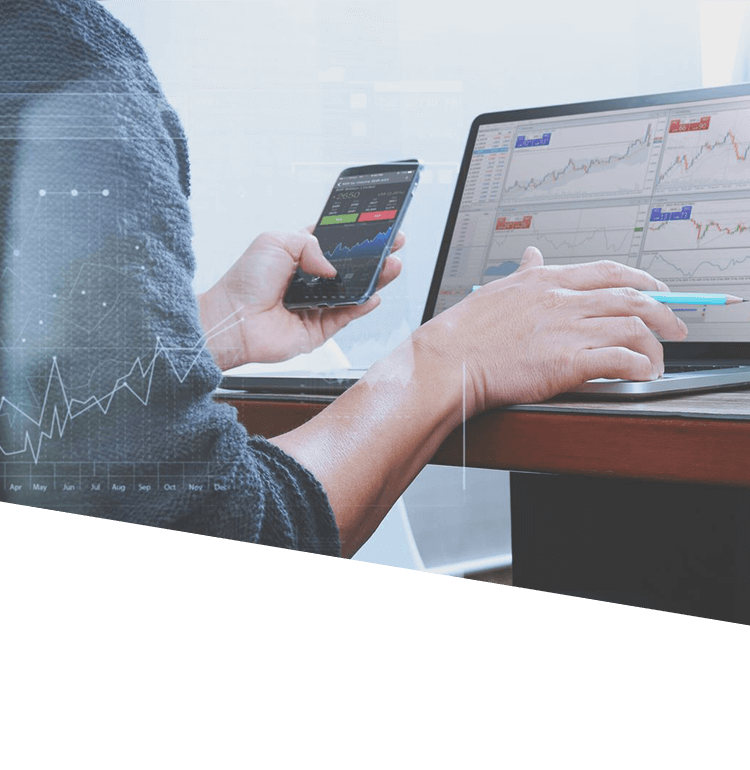Experience Trading
on the Go
on the Go
How to Trade
Commodities?
A commodity refers to a basic good that is useful in our daily lives. In economic terms, a commodity refers to goods that have full or partial fungibility (meaning whose individual units are interchangeable). These commodities form the basic inputs in the production of other goods and services and are widely traded across the globe. The term commodity trading refers to the trading of a large number of goods, such as oil, gas, precious metals, cocoa, coffee, wheat, sugar and spices.
Trading in commodities is an ancient concept that formed the basis of the barter system. Over the years, commodities trading has become more organised and is carried out through formal exchanges. Initially, commodity trading was restricted to agricultural products, but over the years non-agricultural commodities such as metals, energy products and diamonds began being traded.
The prices of these commodities are basically determined as a function of the overall market along with demand and supply factors. Well-established physical commodities are traded in spot and derivative markets. A major reason for trading commodities is portfolio diversification. The commodities market is useful for those who trade financial instruments from other financial markets like stocks and forex.
Commodities are also considered a good hedge against inflation. This is a common risk management trading strategy during periods of market volatility. Inflation corrodes the value of assets like money (currencies) and exerts downward pressure on stocks. However, by its very definition, inflation causes a rise in the price of commodities.
What are the
Different Types of
Commodities?
Commodities are often separated into two typed, namely hard commodities and soft commodities. Hard commodities are raw materials that are mined or extracted and appear as natural resources. Soft commodities are agricultural products or livestock.
In trading, a wide range of commodities are categorises into metals, energy, livestock, meat and agricultural products.
Metals
This category includes gold, silver, platinum, palladium, copper, and other metals. The most popular traded among these are gold and silver. In fact, these metals are so widely traded that they are often clubbed together in a separate category of precious metals despite essentially being commodities. Trading metals is largely done by investors to hedge against high inflation levels or currency devaluation. Since these metals have real, conveyable value and high liquidity, they are extremely popular among traders. As a result, metals are considered safe-haven instruments that tend to thrive during high levels of volatility and market fluctuations.
Livestock and Meat
This category of commodities includes live cattle, feeder cattle, pork bellies and lean hogs. This is, however, not a very popular category among regular retail traders.
Energy
This category includes crude oil, natural gas, heating oil and gasoline. Growing demand for energy related products and the limited supply (and complexities in production) of these items impacts their price and contributes to high trading volumes. The market for oil and other energy products is impacted by production levels, and the development of alternative energy resources like wind and solar power and biofuels.
Agriculture
Items such as corn, soybean, wheat, rice, cocoa, coffee, cotton, and sugar are highly traded and their prices vary based on several factors like seasonal availability, weather conditions, production levels and exports.
How are
Commodities
Traded?
Commodities can be traded in spot markets, exchanges or via futures markets. Most commodities are traded on commodity exchanges like the New York Mercantile Exchange (NYMEX), the Chicago Mercantile Exchange, the Chicago Board of Options Exchange (CBOE), the Minneapolis Grain Exchange and the Chicago Board of Trade. Indirect exposure to these commodity markets is possible through investments in the stocks of companies engaged in their production, exchange traded funds (ETFs) and mutual funds.
Another popular method of investing in commodities is through a futures contract, which is a legal agreement to buy or sell a commodity at a predetermined price at a specific time in the future. In this case, the buyer of a futures contract agrees to buy and take possession of the underlying commodity when the contract expires. Similarly, the seller of the futures contract agrees to deliver the underlying commodity at the time of contract expiry. Generally, institutional investors and commercial users participate in the futures markets for commodities. Speculative retail investors typically access commodity exchanges via their broker.
Recent years have witnessed the emergence and growing popularity of commodities CFDs (Contract for Differences). Such instruments allow traders to speculate on the price movements in various commodities without having to buy or sell the underlying asset.
Which are the Most
Traded Commodities?
Broadly speaking, commodity prices are determined by the interplay of demand and supply. However, there are a number of factors that impact the demand and supply of commodities, including the economic situation of a country, natural disasters and even trade agreements between countries. Prices of commodities can be highly volatile, creating attractive trading opportunities. Let’s look at the five most traded commodities in the world:
Oil
This is such an essential commodity that wars have been fought over it. Today, it is also among the most widely traded commodities in the world. Commonly known as crude oil, this commodity is a naturally occurring liquid fossil fuel that is in high demand and known for its volatile prices. The major benchmarks used for the pricing of crude oil are the US WTI (West Texas Intermediate) and the UK’s Brent. The demand for crude oil is driven as much by global economic conditions as they are by speculations related to trading as well as its future production and demand levels.
Originally used to refer to the sweet light crude oil extracted from the Brent Oil field in the North Sea, Brent oil now represents crude oil blends from several oil fields. The current Brent blend includes crude oil produced from the Brent, Forties, Oseberg, Ekofisk and Troll oil fields. This grade of oil is lighter than the WTI oil because of its relatively low density and is also sweet because of its low sulphur content. Brent is the leading global price benchmark for the Atlantic Basin crude oil and is used to set the price of nearly two thirds of the world’s internationally traded crude oil supplies. Despite being predominantly UK based, the price of Brent is expressed in US dollars. Both WTI and Brent are expressed as US dollars per barrel.
Silver
This precious metal finds use in jewellery, mirrors and industrial applications like printed circuits, batteries, and other industrial products. The limited supply and growing demand by industries make this metal an attractive instrument for trading. Silver prices are expressed as US dollars per ounce.
Natural Gas
Another energy commodity worth mentioning is natural gas. This is an environment friendly fuel whose burning produces lower carbon emissions. Lighter than air, this commodity is increasingly finding favour with traders because of its growing applications and limited supply. The commodity is also crucial for producing electricity, besides being a source of fuel for industries. The price of natural gas is expressed in US dollar per thousand cubic feet.
Trading in natural gas is done to speculate on a weak US dollar or higher inflation or to diversify one’s investment portfolio. Traders can gain exposure to natural gas prices without buying the commodity by opting for commodities CFDs offered by reputable and regulated brokers.
Gold
A highly popular commodity since antiquity, gold is considered as a safe-haven option, protecting investors from inflation, geopolitical and economic risks. Gold can be traded in many currencies, although its market quotes are given in US dollars per troy ounce.
What Impacts
Oil Prices?
Crude oil is the most popularly traded commodity, while its prices tend to remain highly volatile. This is largely because of crude oil’s susceptibility to geopolitical events. Since a large proportion of the world’s oil reserves are found in only select areas like the Middle East, Africa and certain parts of South America, prices tend to shift a lot. Supply and demand factors play an important role in the movement of oil prices.
The OPEC (Organisation of the Petroleum Exporting Countries) is a cartel of countries that export petroleum and regulate the price of oil by controlling its supply. The cartel includes Algeria, Angola, Equatorial Guinea, Gabon, Iran, Iraq, Kuwait, Libya, Nigeria, the Republic of the Congo, Saudi Arabia (which is the cartel’s de facto leader), the United Arab Emirates and Venezuela. The group controls nearly 60% of global oil supply. The OPEC’s influence on oil prices, however, declined in recent years due to the expansion of the American fracking industry which uses drilling to extract oil, natural gas, and geothermal energy from deep underground sources. Several nations like Canada and China also contribute significantly to global oil production.
In addition to supply and demand factors, natural disasters, wars, and geopolitical events also have a significant impact on oil prices. Here are the main factors that impact global oil prices:
The economic position and strength of the largest consumers of oil. A slowdown in the economy, like what was experienced during the 2008-2009 financial crisis and the 2020 pandemic era, results in reduced demand and a downturn in oil prices. Travel restrictions during the pandemic-related lockdowns across the globe saw oil prices plummet to the negative territory for the first time in history. Even after the gradual reopening of economies, oil prices were slow to recover due to low demand and oversupply. The OPEC cartel and its allies (mainly Russia) needed to cut back production and supply significantly to support oil prices, resulting in a recovery to above $45 per barrel towards the end of the year.
Development of alternative energy sources like renewable energy has a negative impact on the demand for crude oil. The development of electric cars, solar and wind energy and their rising adoption by countries can result in reduced demand for oil and a consequent decline in prices.
Value and strength of the US dollar. Since oil prices are quoted in US dollars, the strength of the greenback tends to have a significant impact on oil prices. A weak US dollar suggests a rise in oil prices, as oil becomes cheaper in other currencies. In the same vein, strength in the US dollar typically precedes a fall in oil prices. Of course, this correlation assumes all factors impacting oil prices remaining constant.
Several other factors also impact oil prices. For instance, in November and December 2020, news of the approval of two major covid-19 vaccines by the US and UK as well as the announcement of stimulus packages by the European Union and the US supported oil prices.
Market speculation of future events and policy decisions also has an impact on oil prices.
People looking to trade in oil futures or oil CFDs need to keep an eye on various factors that can significantly impact global oil prices, including WTI and Brent crude.

What Impacts
Natural Gas Prices?
Natural gas is mainly found in Russia, Iran, Qatar, United States and Saudi Arabia. The price of this widely traded commodity is highly dependent on supply and demand and even a small change in these market forces can result in significant price swings. Since physical natural gas is not taken possession of, all transactions in it take place electronically with only profits or losses reflected in the trading.
Some major factors that impact natural gas prices are:
Production levels: The production levels are a key determinant of natural gas prices.
Weather conditions: Extreme or abnormal weather can have a significant impact on natural gas prices. Hurricanes or extreme cold can hamper drilling activity, thereby affecting production levels. Extreme cold conditions also result in surging demand for natural gas for heating.
Development of alternative products: The growing focus on the development of eco-friendly alternatives like solar and wind power can cause price swings in natural gas.
Economic growth: An improvement in economic conditions is typically led by industries. This means economic growth goes hand-in-hand with higher demand for natural gas, thereby exerting an upward thrust on its prices.
Storage supplies: The quantity of natural gas stored is important for meeting increased demand and an important determinant of prices. Stored gas can be used when production levels are inadequate to meet demand and prevents any increase in prices due to this. High inventory levels also suggest the development of oversupply conditions, which exerts pressure on prices.
Substitutes: Several industries can substitute natural gas with coal, solar, wind and hydroelectric power. The increased use of such substitutes prevents natural gas prices from rising.
Those who wish to start trading natural gas need to keep an eye on the economies of major producers like the United States and Russia. Speculators are constantly on the lookout for major economic announcements in these countries. Established brokers offer clients access to resources such as an economic calendar which provides specific information about when the latest updates are due and the expectations for each important data release.
Traders also need to monitor the overall political situation in the producing and consuming nations, besides tracking important announcements related to storage levels. Since weather plays an important role in the production and consumption of natural gas, the price movements show a recurring or cyclical pattern, providing opportunities for speculation.

What Impacts
Gold Prices?
Gold is a sought after commodity that is traded because of its investment value, as well as its industrial applications. The major trading hubs for gold are Chicago, New York, Zurich, and London with India, China and the US being the biggest markets for this precious metal.
Gold prices are impacted by several factors such as:
Interest rates: Higher interest rates can make holding gold more expensive and lower rates make holding gold more attractive. An increase in interest rates may result in a decline in gold prices as the opportunity cost of forgoing interest-bearing assets increases. Again, if the US Federal Reserve indicates a reduction in the interest rates, gold prices tend to rise as the opportunity cost of forgoing interest-bearing assets remains low. This is the reason gold prices spiked past $2,000 an ounce for the first time in history in August 2020, as central banks around the world cut interest rates to trigger economic activity amid the pandemic.
Monetary policy: The US Federal Reserve’s view of the country’s economy and the announcements related to interest rate changes play a key role in impacting gold price movements.
Currency markets: As gold is denominated in US dollars, the value of the greenback can have a significant impact. A strong dollar can make gold relatively costly for foreign investors, thereby reducing demand for this precious metal and pulling its prices lower. On the other hand, a weak US dollar can make gold relatively less expensive for foreign investors, boosting demand and resulting in higher prices.
Inflation: High inflation rates tend to result in increased gold prices. In the developed nations, inflation is an indication of economic growth, which is typically followed by central banks, such as the Federal Reserve, Bank of England and European Central Bank, expanding money supply. This dilutes the value of money in circulation, which means that assets like gold become more expensive to buy. Gold is used as a hedge against inflation.
Central bank holdings of gold: Central banks of all countries hold gold reserves and an increase in these reserves indicates increased demand, lifting gold prices.
Gold for wealth protection: Viewed as safe haven by most investors, gold demand increases in times of economic uncertainty and political instability. When the returns on equities, bonds and other avenues fall, gold investing increases, leading to a rise in prices.
Demand for gold by industry: Gold is used in jewellery making and industrial applications. A rise in demand for gold in these uses is a significant factor affecting its price.
People looking to trade gold should be aware of these factors and their possible impact on prices. Technical analysis can be used to identify trend signals, which is recommended for gold CFD trading. It is also useful to keep an eye on commodity futures in general as futures trading can be used as a guide to judge market sentiment.

What Impacts
Silver Prices?

Silver is another precious metal that finds favour with investors and traders alike. Silver demand is driven by its industrial use, jewellery and silverware and coins, as well as photography. Most of the silver produced in the world comes from Mexico and Peru, while the main consumer nations of this precious metal are the US, India, UK, Mexico, Canada, France, Germany, Japan and Italy.
The key factors affecting silver prices are:
Supply and demand: The limited supply of this precious metal and the growing industrial demand for it is reflected in the price. Any changes in the demand or supply are the primary factors impacting silver prices.
Inflation: Silver is considered as a hedge against inflation. Since inflation erodes the value of paper currency, people flock to buying precious metals like silver during periods of high inflation rates.
Crude oil prices: Since silver mining is an energy intensive process, a rise in oil prices is likely to be followed by a rise in the price of silver. Both gold and silver have a high correlation to crude oil prices.
Value of the US dollar: Silver prices and the US dollar have an inverse relationship. So, during periods of recession, when the US dollar is bought for its safe-haven appeal, traders tend to disinvest in silver.

How
to Choose
a Broker for
Commodities Trading?
If you are interested in trading commodities, you will need to first choose the type of instrument in which to trade and the commodity or commodities you would like to gain exposure to. For this, you need to check the product offerings of various brokers since some offer only precious metals, while others may offer precious metals, crude oil, and other commodities. Once you are clear about the type of instrument and the commodity, you will need to finalise a broker.
Here are some considerations for choosing a trusted broker for commodities trading:
1. Regulated
Always choose a regulated and registered broker for commodities trading. This ensures that the broker takes the necessary steps to safeguard your interests. Ensure that the broker is regulated by an esteemed regulatory body that has stringent guidelines. For instance, organisations like the Australian Securities and Investment Commission (ASIC) have strict rules in place to protect traders in Australia.
2. Products
Do check whether the broker offers trading in commodities and the instruments you wish to trade in.
3. Leverage
Check the level of leverage being offered by the broker and the consequent margin requirements. Leverage allows a trade to take a significantly higher exposure than the funds available with them. Some brokers offer leverage as high as 1:500. While you choose such a broker, it does not mean you have to use the complete leverage offered as it also comes with increased risk.
4. Fees and spreads
Brokers may charge deposit and withdrawal fees. Also check the spreads on various products. These constitute your cost of trading and have an impact on your profitability. In some instances, the brokerage fees are built into the spread.
5. Platforms
Access to an advanced trading platform with improve the ease and speed of trading. Established platforms such as MetaTrader 4 and MetaTrader 5 provide real-time pricing and have an array of tools that can help identify trading opportunities. The one-click trading option and live streaming of prices are other attractive features of these extremely popular trading platforms. Well established brokers also offer a demo account option which allows you to practice trading using virtual currency.
6. Payment options
Check the payment methods accepted by your broker for depositing and withdrawing funds from your trading account.
7. Customer support
The level of customer support offered by a broker is important, especially for new traders. Established brokers will offer continued support via email, live chat and over the phone.
Now that you know how to trade commodities, get ready to diversify your portfolio. Use commodities to to both speculate on prices and hedge risks.
 Access 10,000+ financial instruments
Access 10,000+ financial instruments Auto open & close positions
Auto open & close positions News & economic calendar
News & economic calendar Technical indicators & charts
Technical indicators & charts Many more tools included
Many more tools included
By supplying your email you agree to FP Markets privacy policy and receive future marketing materials from FP Markets. You can unsubscribe at any time.
Source - database | Page ID - 974